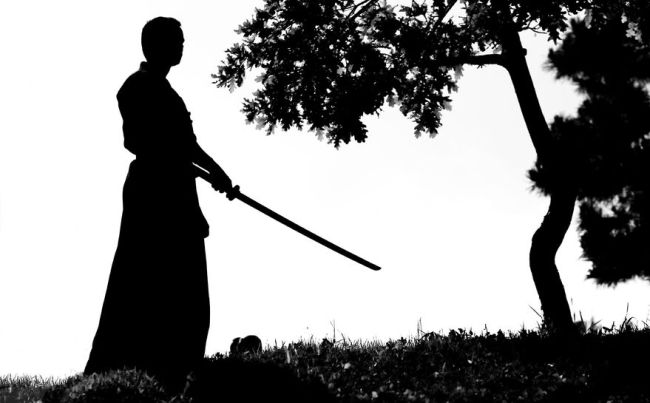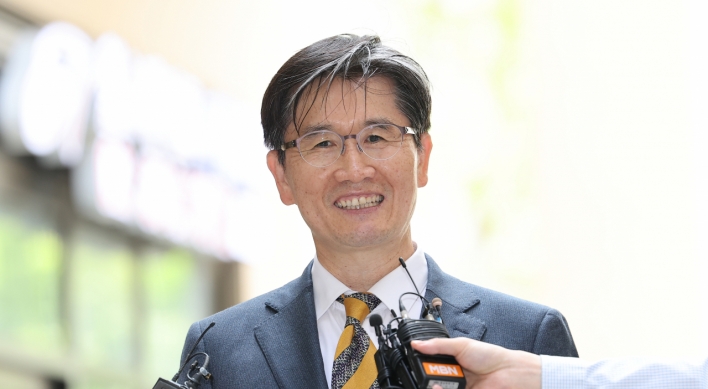 |
| (123rf) |
Walking or running in a full suit of samurai armor is not the easiest thing in the world. Swimming in it is even harder, but that‘s exactly what some in Japan are doing. For fun. “It’s heavy, and it‘s hot in here... Fan me hard,” Mutsuo Koga, a 27-year-old doctor, told fellow disciples of traditional Japanese swimming at a recent meet.
“I’m worried about whether I‘ll be able to get myself back out of the water. It’s been three years since I last swam,” said Koga as he readied to take the plunge in a public swimming pool.
Traditional swimming was developed during Japan‘s feudal 15th and 16th Centuries, when feared samurai swordsmen roamed the country enforcing their masters’ will.
Part survival technique -- there were times when a warrior just had to swim for it, boots and all -- and part aesthetic performance, traditional swimming now has its place in the pantheon of Japanese martial arts.
And like all martial arts, its adherents say it has real-life applications.
“The primary purpose of this kind of swimming is to acquire practical skills for swimming in a real environment,” said Tadao Koga, Mutsuo‘s father and the grand master of the Kobori school, one of twelve recognized by the Japan Swimming Federation.
“If you can swim fast using Western strokes, that doesn’t mean you can survive in a natural environment,” said Koga, 67.
Traditional swimmers have to master a kind of treading water, which will allow them to withstand powerful waves near seashore.
They also have to learn the “hayanuki” stroke, vital for swimming against a current or up a river, thrusting your body high into the air as your arms crash into the foam.
Whatever happens, you have to keep your head above the water and your wits about you -- that obstacle looming in front of you could be a rock, or it could be an axe-wielding enemy.
Oh, and you have to do it while wearing 15 kilograms (33 pounds) of armor.
The appeal of the sport is that “swimmers compete on form and beauty, rather than the speed of swimming,” said Yoko Suzuki, 25, a champion of women‘s traditional swimming.
Masahiko Yaginuma, chairman of the Japanese Traditional Swimming Committee of the JSF, said the form was widely taught in schools in the early 20th century but fell out of favor and is now only found in a few institutions.
“Nowadays women in their 60s or older are the main group of new learners,” because they see traditional swimming as an extension of the other noble arts a cultured Japanese woman learns -- like flower arranging and tea ceremony, he said. (AFP)
<관련 한글 기사>
日, 사무라이 비장의 생존 기술은 무엇?
십 수 킬로그램에 달하는 무거운 사무라이 갑옷을 입고 하는 수영 방식이 일본 현지에서는 하나의 무예이자 스포츠로 행해지고 있다.
이 ‘일본영법(日本泳法)’이라고 불리는 수영방식은 15-16세기 경 사무라이들이 그들의 쇼군을 위해 활역하던 일본의 봉건시대에 처음 개발됐다.
이 수영법은 사무라이들이 갑옷과 장화를 모두 착용한 채 수영을 해야만 하는 상황에서 생존을 위한 기술로 처음 개발되어 예술적 차원으로 승화되었으며, 이제는 일본 현지에서는 무술의 하나로 인정받고 있다.
일본수영연맹이 인정한 전통수영의 대가 타다오 코가 씨는 “일본영법의 일차적 목적은 실제 상황에서 수영하는 실용적 기술을 습득하는 데 있다”고 말하며 “서양에서 유래한 자유형으로 빠르게 수영할 수 있다고 해서, 실제 강이나 바다에서 수영해 언제나 안전하다고는 할 수 없다”고 전통 수영의 강점을 설명했다.
이러한 실용적 기술의 일부로서, 일본영법은 물 속에서 머리를 항상 수면위로 내놓은 채 수영을 하는 한편, 두 팔로 물살을 헤쳐 강한 물살을 이겨낼 수 있는 방식을 채택하고 있는데 이 수영을 배우기 위해서는 15킬로그램에 달하는 무거운 사무라이 갑옷을 입어야 한다는 점이 특징이다.
일본영법협회장인 마사히코 야기누마 씨는 20세기 초까지만 해도 일본수영연맹이 공인한 12개 유파에서 많은 사람들이 일본영법을 배웠으나 오늘날은 이에 흥미를 느끼는 사람이 크게 줄어 일부 유파만이 명맥을 유지하고 있다고 밝혔다.
야기누마 씨는 “최근 60세 이상 여성들이 일본영법을 새로이 배우기 위해 유파를 찾고있다”며 “이들은 일본영법을 배우는 것이 꽃꽂이나 다도와 같이 일본 여성들이 배우는 고급스러운 문화활동의 일환으로 받아들이고 있다”고 덧붙였다. (코리아헤럴드)
-
Articles by Korea Herald










![[Weekender] How DDP emerged as an icon of Seoul](http://res.heraldm.com/phpwas/restmb_idxmake.php?idx=644&simg=/content/image/2024/04/25/20240425050915_0.jpg&u=)

![[Today’s K-pop] NewJeans' single teasers release amid intrigue](http://res.heraldm.com/phpwas/restmb_idxmake.php?idx=644&simg=/content/image/2024/04/26/20240426050575_0.jpg&u=)






![[Herald Interview] Mistakes turn into blessings in street performance, director says](http://res.heraldm.com/phpwas/restmb_idxmake.php?idx=652&simg=/content/image/2024/04/28/20240428050150_0.jpg&u=)
